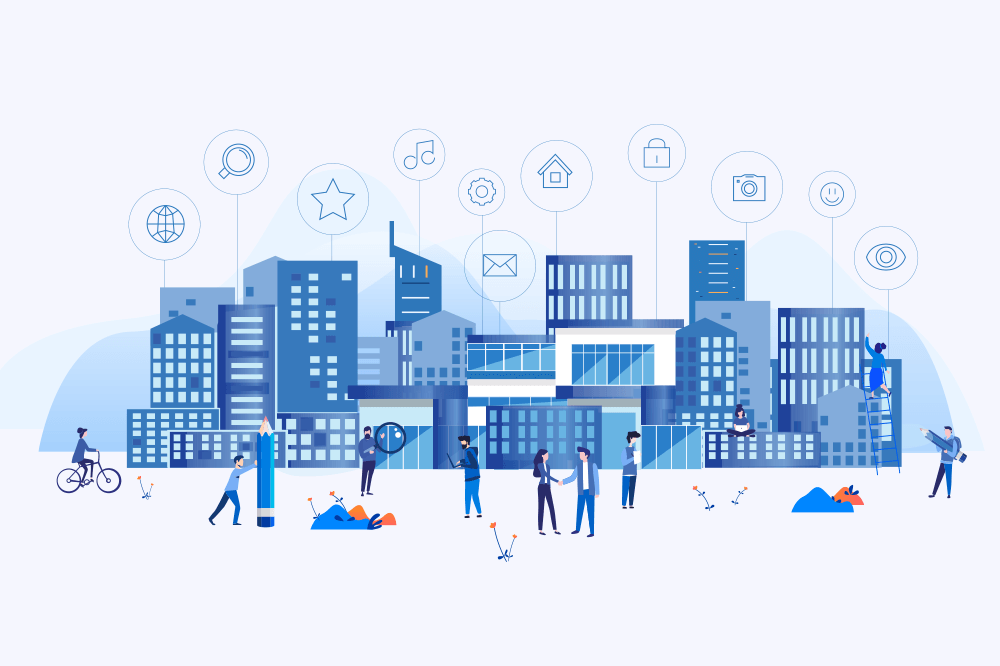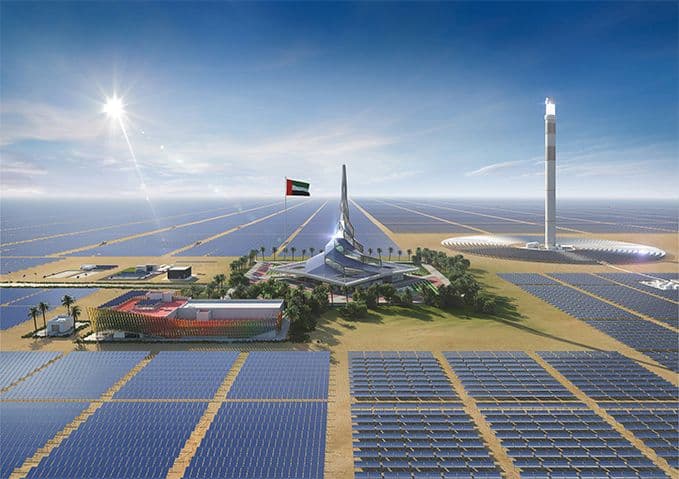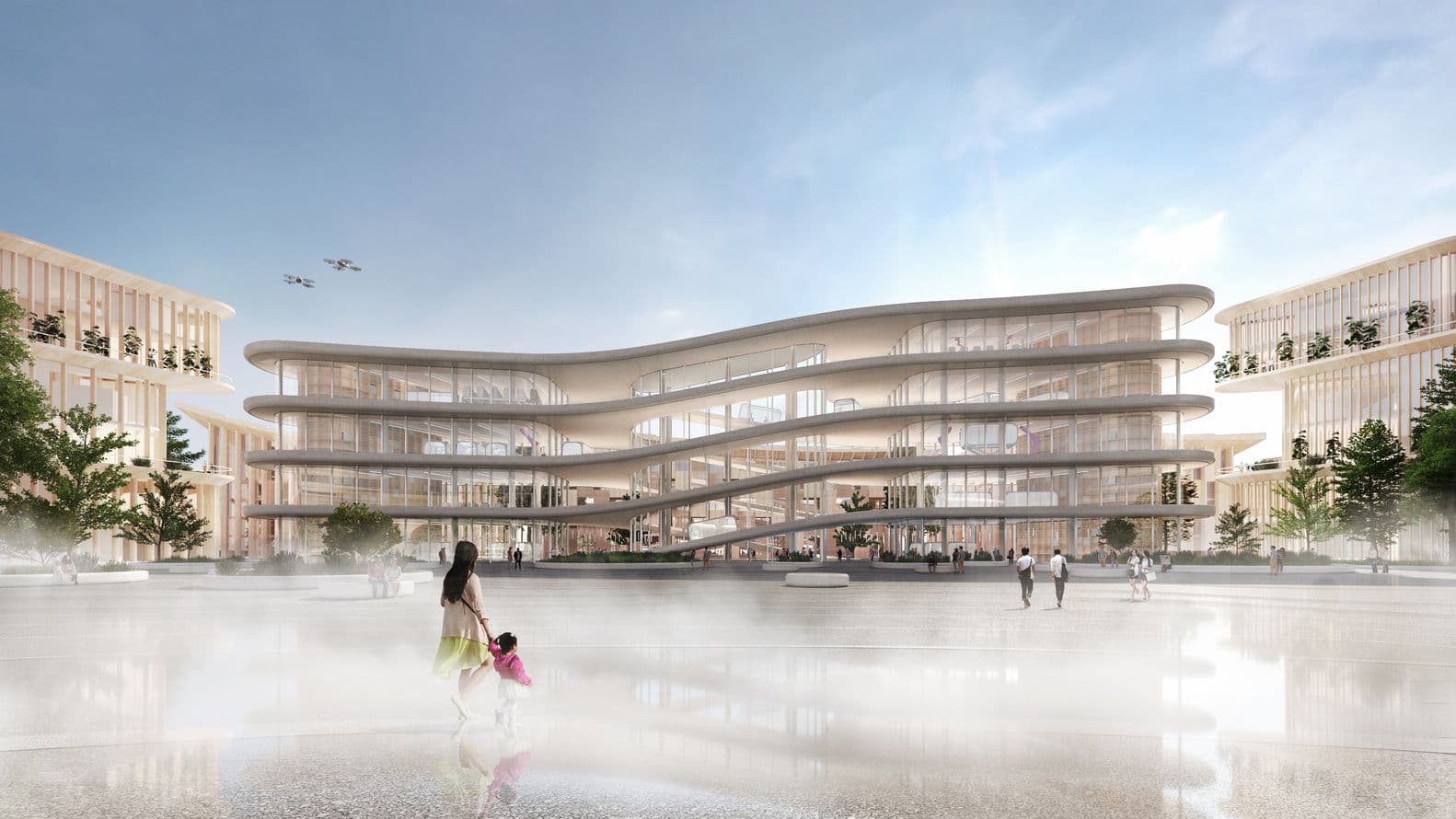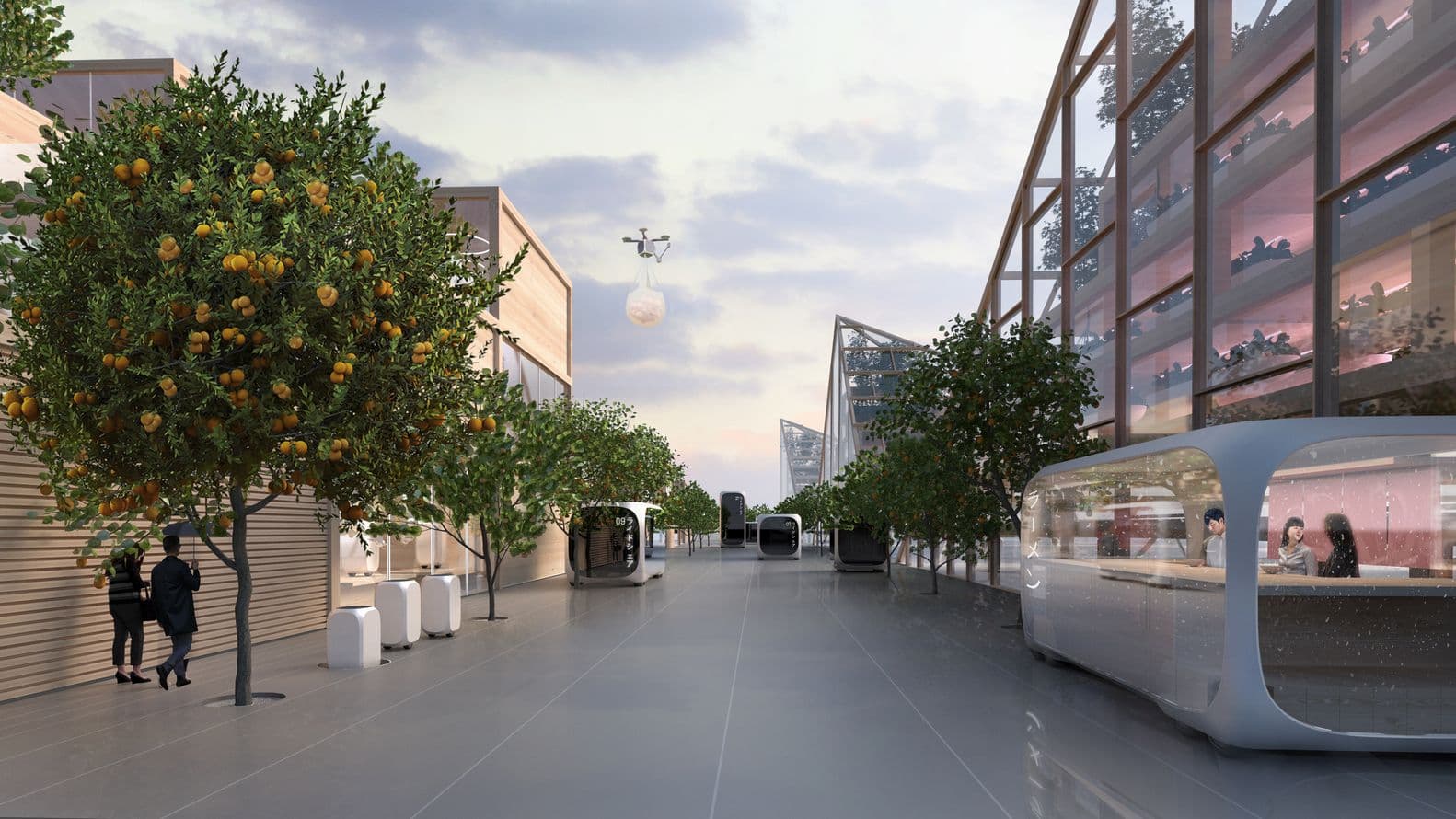The concept of smart cities has been circling around for years. Although initially dubbed as futuristic embroidery and oftentimes portrayed in dystopian novels, it is no longer a pipe dream but a bold vision coming to life. As much as flying cars and robots replacing humans in daily activities are not likely to be seen in the foreseeable future, the implementation of smart cities idea is a real-life occurrence. Technology world is on a continuous hunt for better, faster, smarter, more efficient and more advanced solutions. Big-tech companies are racing to introduce ground-breaking measures in order to fit into the leading edge. And… it’s no surprise that they do.
Humankind is bound to witness the highest level of technological advancement. From rechargeable electric vehicles, energy created from wind or water and spaceships exploring cosmic space to big data, fintech, IoT and artificial intelligence, the world is inundated with solutions that were once beyond the boldest dreams. This is where the idea of smart cities emerges and sets off on an ambitious venture to bring the innovations together in order to create interconnected operation networks that would eventually run the cities.
The demand for such projects is fueled by mass population surge to urban areas which tests their infrastructure and services to the limits. Allegedly, out of 7.8 billion people currently inhabiting the planet, more than half is living in cities permanently - and the number continues to grow. It is estimated that within the next 30 years, another 2,5 billion people will move to urban areas. Such population figures pose a potential threat for various aspects of cities’ proper functioning i.e. mobility, energy, waste or security.
Real-life smart cities best examples
Authorities and entrepreneurs have been searching for solutions to leverage technology so that it satisfies the increasing requirements. Across the globe we can already observe some highly advanced metropolitan areas. Amongst the most technology-oriented cities, we can differentiate:
Singapore
According to IMD Smart City Index 2020, Singapore ranks first. It leads the way in terms of healthcare and livability, mobility and safety. Although, known for its extraordinary architecture, Singapore has a lot to offer when it comes to smart mobility solutions, with great emphasis on facilitations for its eldelry citizens. An autonomous fleet has been created to help senior citizens stay mobile. They also use a contactless payment/ticketing system in public transport. With the use of “open data”, the authorities introduced a trial to facilitate transport planning, that way 5 000 vehicles are being analyzed in real-time circumstances. The trial resulted in the rate of over-crowded buses being reduced by whooping 92%.
Another milestone on the path to the impressive number one position in smart cities ranking is how greatly developed the healthcare system is. TeleHealth video consultations offer appointments over the internet. TeleRehab allows patients to undergo exercises in their own home through wearable IoT devices which monitor patients’ state. There is also an AI-based Smart Elderly Alert System that alerts caregivers when an emergency action is required due to the patient's physical symptoms.
Dubai
Surely, there are no surprises here. With financial resources of that scale and sharp investments, Dubai has a lot to offer in terms of smart city solutions. It set a goal of going entirely paperless by the end of 2021, heavily focusing on high-level digitalization. Going paper-free is not the only step on Dubai’s path towards smart sustainability, they also undertook a massive venture of building the largest solar park in the world. Spread over a total area of 77 square kilometers, Solar Park reached a generating capacity of 1.013 GW, while its phase 4 and 5 is still under development.
Dubai has also introduced an online way of delivering government services. Citizens can obtain three types of bundles: the wedding bundle, the newborn bundle and the business bundle from the comfort of their homes. Similar facility has also been launched via the DubaiNow app that allows people to pay for utilities, transportation, health services, education or residency directly from their smartphones. There is also an advanced smart car rental service in the city, all steered from a mobile device.
Photo: DEWA (Dubai Electricity and Water Authority)
Copenhagen
In many rankings claimed to be the happiest and smartest city in Europe, Copenhagen is known for its impressive levels of eco-management. In 2014 it was dubbed as the European Green Capital and set an ambitious goal of reaching carbon neutrality by 2025. Through the energyLab Nordhavn project, they managed to reduce emissions and implement new urban energy infrastructures, i.e. through producing heat from municipal waste. Copenhagen is a great showcase of testing real-life, advanced technology in urban areas in order to improve the quality of life. It has to be mentioned that it’s also a marvellous place for entrepreneurs, highly advocating for startups initiatives. With more than 250 small companies that make up two-thirds of the smart city industry, Copenhagen welcomes investments with open hands and supports their progress through various government incentives.
Copenhagen Solutions Lab also partnered with Google to create Project Air View – a system measuring air pollution in the streets of Copenhagen. The real-time data across the city is collected from Wi-Fi access points, installed i.e. on the streetlights or buses and then fed into the general system. The knowledge generated from the partnership will provide the politicians with new insight upon which they can develop public policy addressing the problem of air pollution.
Oslo
Norwegian capital grows to be Copenhagen's biggest rival in terms of smart city solutions. Awarded with the European Green Capital title in 2019, Oslo carries the e-mobility solutions on its back for what seems like an entire Europe. It plans to ban combustion engine vehicles by 2025 in order to meet its ambitious environmental targets. As much as it may sound extreme, with a charging network that developed and governmental incentives of that scale (removing most taxes, offering free parking and access to charging points and ferries, and authorising the use of bus lanes – the congestion in these “free-flow lanes”), the goal looks in fact reachable.
However, not only smart e-mobility stands for the reason behind Oslo “smartness”. FutureBuilt is a 10-year programme that aims to bring together public and private partners who are then to invest in buildings with 50% reduction in carbon footprint.
Boston
Boston was one of the first cities that started experimenting with smart cities solutions back in 2010, as a somewhat of a testrun for technologies. Throughout the years, many of them have been implemented in daily life for good. One of the most prominent examples of it are the well-developed apps, facilitating effortless navigation and reporting known as participatory urbanism. Few flagship apps can be differentiated: Where’s My School Bus allows parents to monitor their child’s safe route to school everyday. BOS:311 is an app that enables easy, on-the-spot reporting of any issues in the city that are instantly transferred to local authorities’ attention.
Boston also paid a great deal of attention to smart transportation and launched various programmes to improve the transport across the busy city.
New York City
It may be free to say that NYC appears somewhere high on any cities ranking in terms of the best, the biggest, the most advanced. It cannot be left out on the smart cities one. However, it must be noted that with a population of that scale and sucha massive density, The Big Apple’s solutions may slightly differ from the aforementioned ones. The main point of focus here is how to ensure that such a mass of people can lead a healthy, sustainable life without draining the city’s resources to the limits. Here’s where local authorities stepped in with smart lighting and water metering systems. Being known for its breathtaking “city at night” views of the lit up skyscrapers, it is also known for one of the highest energy consumption in the world. In 2013 they launched the Accelerated Conservation and Efficiency (ACE) program in order to get more control of the building's lightning systems. More than $350 million in funding has been already distributed across more than 650 buildings owned by 16 city agencies. Many of these projects are LED lighting retrofits, and they are saving over $800,000. In terms of water, NYC introduced an automated meter reading system that’s already installed in over 800.000 buildings feeding the daily water intake and delivering detailed data. Apart from that NYC can proudly brag about numerous systems enabling efficient waste management, air quality control and many more.
All of the above have managed to implement innovatory solutions as new standards in the everyday life of citizens and authorities. However, these are naturally not the only cities in the world that undertook actions towards being more smart and technology-oriented. Amongst other solutions implemented across the world we can find:
- Sensors that can monitor crowd density and the movement of registered cars.
- Systems that can tell when people are littering from high rise buildings
- Apps allowing citizens to find an ATM, pay a ticket, report violations
- Smart street lights that adapt to the activity on the street.
- Smart metering systems feeding the energy data automatically to energy supplier, connected with solar panels and their share of energy production to the grid
- Waste management with sensors automatically reporting to the services when containers are full
- Advanced charging networks for electric vehicles, enabling seamless commute for EV users
- Broad adoption of solar panels in public assets, such as traffic lights,
The list impressively goes on.
As much as all that has been implemented already is to be admired, big tech companies take no half-measures and aspire to shoot with technology through the roof. Apart from the real-life examples, some walked the extra mile and went on an astronomic venture of building smart cities from scratch.
It was back in 1966 when Disney introduced his first vision of a separate town-like area designated for a showcase of technology that ultimately was supposed to develop solutions that would help people lead a seamless existence. EPCOT (Experimental Prototype Community of Tomorrow) eventually became a theme park, but its main theme was rooted directly in the smart city idea.
Many years later, we get to experience what may seem like Disney’s vision of an all-smart city comes to life.
Woven - Toyota’s bold vision of the future
Toyota introduced what might be the boldest concept of smart city back in 2020. Although slowed down by the onset of pandemic, the project is now moving forward. Woven City, nestled at the foothills of Mount Fuji in Japan, is supposed to take up 175 acres and become somewhat of a real-life laboratory for the most daring findings technology can offer. Built from scratch, Woven is supposed to not only serve as a test-station for engineers but as a fully functional space which inhabitants would get the chance to, by all means, contribute to its further development. Bjarke Ingels Group (BIG), who leads the architectural aspect, describes the project as follows: “Toyota Woven City aims to bring people and communities together in a future enabled by technology yet grounded in history and nature”.
Photo: BIG - Bjarke Ingels Group
Namely, despite almost unlimited amounts of technology, Toyota firmly assures that Woven City is a lot more than just a showcase of robotics and applied science. The focus is on sustainability and human-centric approach.
It is important to underline how far-fetched and penetrative the project is. It touches upon every aspect of urban wellbeing. Starting with smart mobility solutions enabling self-driving vehicles to peacefully coexist with pedestrians, the visoners behind the Woven City’s idea left no room for analogue settlements. Buildings are meant to be packed with technology to such an extent where daily chores much like taking the trash out, will be handled by artificial intelligence and fully automated. Robots are supposed to also take care of the inhabitants of the City of Future and measure their health parameters automatically, reporting any discrepancies.
The developed technological ameliorations are likely to establish the foundation for its future use on a broader scale.
We’ll break down some of them.
City of the future - mobility solutions
Being a former car manufacturer, now a mobility company, Toyota really pushed the boundaries with mobility solutions that are to be implemented in Woven. They proposed an innovative way to separate different types of urban commute and reinforced it with autonomous vehicles to then transfer a great deal of transportation underground.
Photo: BIG - Bjarke Ingels Group
In terms of the pathways, there will be three types:
- One road is designated for use by higher speed/zero emission automated vehicles.
- Another street is designed for a mix of lower speed personal mobility vehicles, such as bikes, e-bikes, and e-scooters.
- The third road is a park-like promenade exclusive for pedestrians.
Such distinction is supposed to serve the seamless convey, allowing everyone to select their chosen mean of transport with a great sense of safety as well as reducing congestion. What must be emphasized is that all vehicles will be zero-emission, electric and fully autonomous. Shared transportation will also serve as a delivery system.
Major thing about the entire conveyance system is that a great share of it is supposed to happen underground in metro-like subterranean systems directly connected with buildings - yet another way to ensure the traffic is limited.
City of the future - infrastructure and housing
Next stop on the winding path towards the ultimate smart city is its infrastructure and housing. Here, again, Toyota reached for some extraordinary measures. Sustainability and functionality seem to be leading the idea behind the housing structure. Houses are to be packed with sensor-based AI to do things such as restocking the fridge or taking out the trash automatically.
It has to be underlined that the aforementioned underground system is going to be connected to the AI solutions, that way right after the sensors report the lack of something, it will get automatically delivered to the building through the subterranean network.
To push things to an even higher level, housings will be equipped with technology monitoring people’s health and also automatically reporting any discrepancies.
City of the future - sustainability
Eco management plays a huge role in Woven City and any other smart city. This is where technology meets nature and serves it in the best possible way.
Amongst the sustainable solutions, powering the eco-efficiency, we can differentiate:
- Solar panels installed on every building’s roof (taking up nearly the entire rooftop space) providing green electricity. In addition energy will be obtained from hydrogen fuel cells.
- Buildings made of mostly of wood to reduce the carbon footprint, using traditional wood joinery mixed with robotic production method
- Only zero-emission electric vehicles charged with energy obtained from solar panel
Smart cities - lessons to learn
It goes without saying that implementation of such advanced smart city solutions into every city is at this point rather impossible. However, much like Rome wasn’t built in one day, as the time passes by, we can all expect more and more technology flowing into the urban areas. It is beyond important for governments to start paying attention to sustainable development and the utilization of AI and technological findings that can ease everyone's lives. Solutions, like the ones available in Copenhagen or Oslo, can be transferred all over the world. With current development of technology, where traffic can be measured automatically, street lights powered with green energy, cars charged with solar electricity and citizens having the chance to navigate and operate tasks from their smartphones, it is crucial that such solutions are implemented worldwide and become the new normal for the better future of the planet. Technology is here to stay and it’s about time humans start using it to increase the quality of daily lives.




